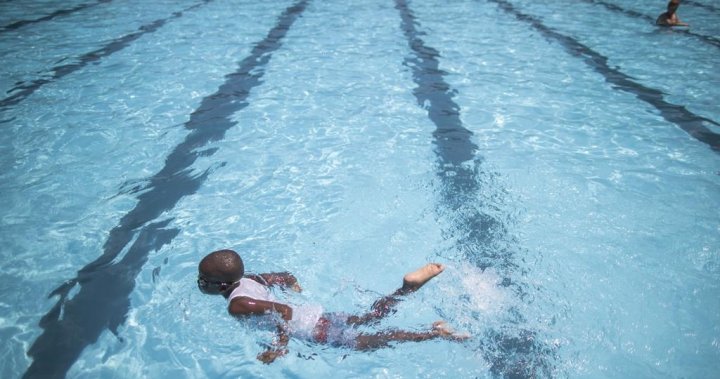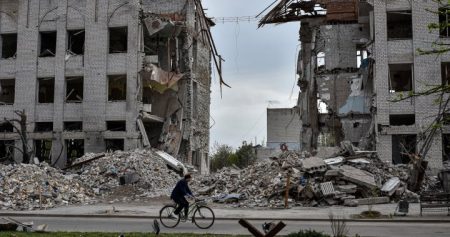The growing demand for public pool access in Ontario is creating a significant strain on existing facilities and leaving many residents underserved. Across the province, families, athletes, children, and individuals struggle to find available swim times due to long waitlists, overcrowded pools, and limited operating hours. The Aquatic Sport Council of Ontario (ASC) is urging for increased investment in aquatic infrastructure, particularly larger 50-metre pools, to address this growing need. The current scarcity of pools is not merely an inconvenience; it impacts vital community services like swimming lessons, hindering water safety education and potentially increasing drowning risks, particularly for children and vulnerable populations.
Ontario’s population stands at 14 million, yet it possesses only 30% of Canada’s 50-metre indoor pools. This translates to a disproportionately low ratio of one large pool for every 748,000 people, one of the lowest in the country. The ASC report emphasizes this disparity and highlights the unequal distribution of pools, leaving some regions significantly underserved. Northern and Eastern Ontario are particularly affected, with access to recreational pools being notably scarce. A 2023 study indicated that 70% of Ontarians would utilize pools more frequently if proximity wasn’t a barrier, underscoring the latent demand masked by insufficient infrastructure. This situation necessitates a strategic provincial approach to pool development, focusing on equitable distribution and addressing the needs of underserved communities.
Toronto, Ontario’s most populous city, exemplifies the challenges posed by increasing demand. Despite operating 123 pools and offering over 200,000 registered swim spaces annually, with a 73% enrollment rate in 2024, the city’s pools are stretched thin. Three recreational pools are currently closed indefinitely for repairs, further exacerbating the strain on the remaining facilities. The city’s Parks and Recreation Facilities Plan recommends the addition of 18 new pools by 2038, along with the replacement or redevelopment of seven existing indoor pools. However, these plans are contingent on funding and are expected to take years to implement, leaving the current shortage unresolved for the foreseeable future. This underscores the need for expedited funding allocation and streamlined construction processes to alleviate the existing pressure on Toronto’s aquatic infrastructure.
The pool shortage extends beyond Toronto, impacting communities across the province. In Sudbury, the city’s sole 50-metre pool has been closed since 2020 with no confirmed reopening date, leaving residents without a vital recreational and training facility. Ottawa also grapples with high demand, experiencing consistently long waitlists for swimming lessons and near-capacity pool rentals. The south end of Ottawa faces a particularly acute shortage, with a low ratio of one pool for every 62,900 residents. In Eastern Ontario, 35% of residents report difficulty accessing public pools, highlighting the widespread nature of this issue. These examples demonstrate the urgent need for provincial investment in aquatic infrastructure to ensure equitable access across Ontario.
The scarcity of pools has far-reaching consequences beyond recreation. Swimming is a fundamental life skill, and limited access to lessons poses a significant safety risk. With fewer opportunities to learn to swim, more individuals, particularly children, are vulnerable to drowning. Investing in pools, therefore, is not merely about providing recreational spaces; it’s about equipping communities with vital life-saving resources. In Orillia, with a population of 35,000 and only one recreational pool, residents are advocating for a new facility to address the overwhelming demand and enhance water safety in their community. This highlights the proactive approach communities are taking to address this issue and the importance of supporting their efforts through provincial funding and resources.
Construction and maintenance of pools are significant investments. A small community pool can cost between $15 million and $30 million, while a 50-metre pool can exceed $175 million. This financial burden often proves insurmountable for smaller cities without provincial support. Advocates argue that pools should be recognized as essential infrastructure, given their multifaceted benefits. They contribute to water safety education, physical activity, injury recovery, and mental well-being for people of all ages and abilities. Larger 50-metre pools, while more expensive to build, offer greater long-term value by accommodating significantly more programs and users, maximizing community benefit. Prioritizing investment in 50-metre pools could offer a more efficient and effective approach to addressing Ontario’s growing aquatic needs. With existing facilities aging and demand steadily increasing, a long-term, strategically planned investment in new and upgraded pools is crucial to ensure equitable access to this essential community resource across Ontario.










